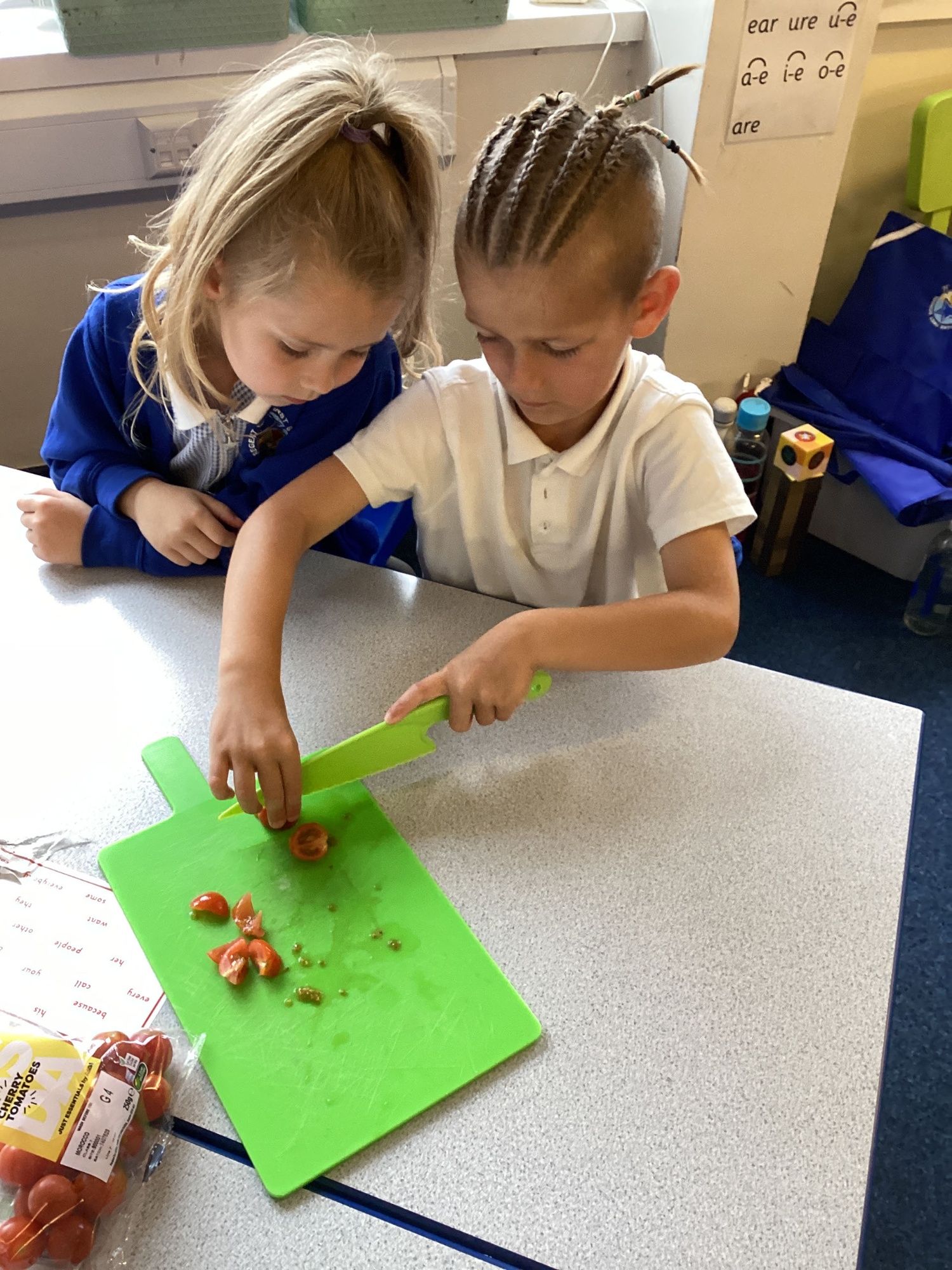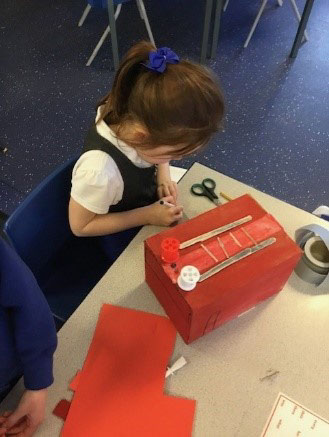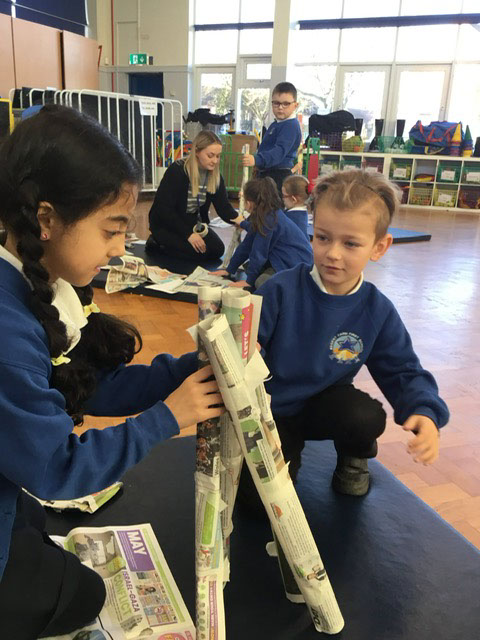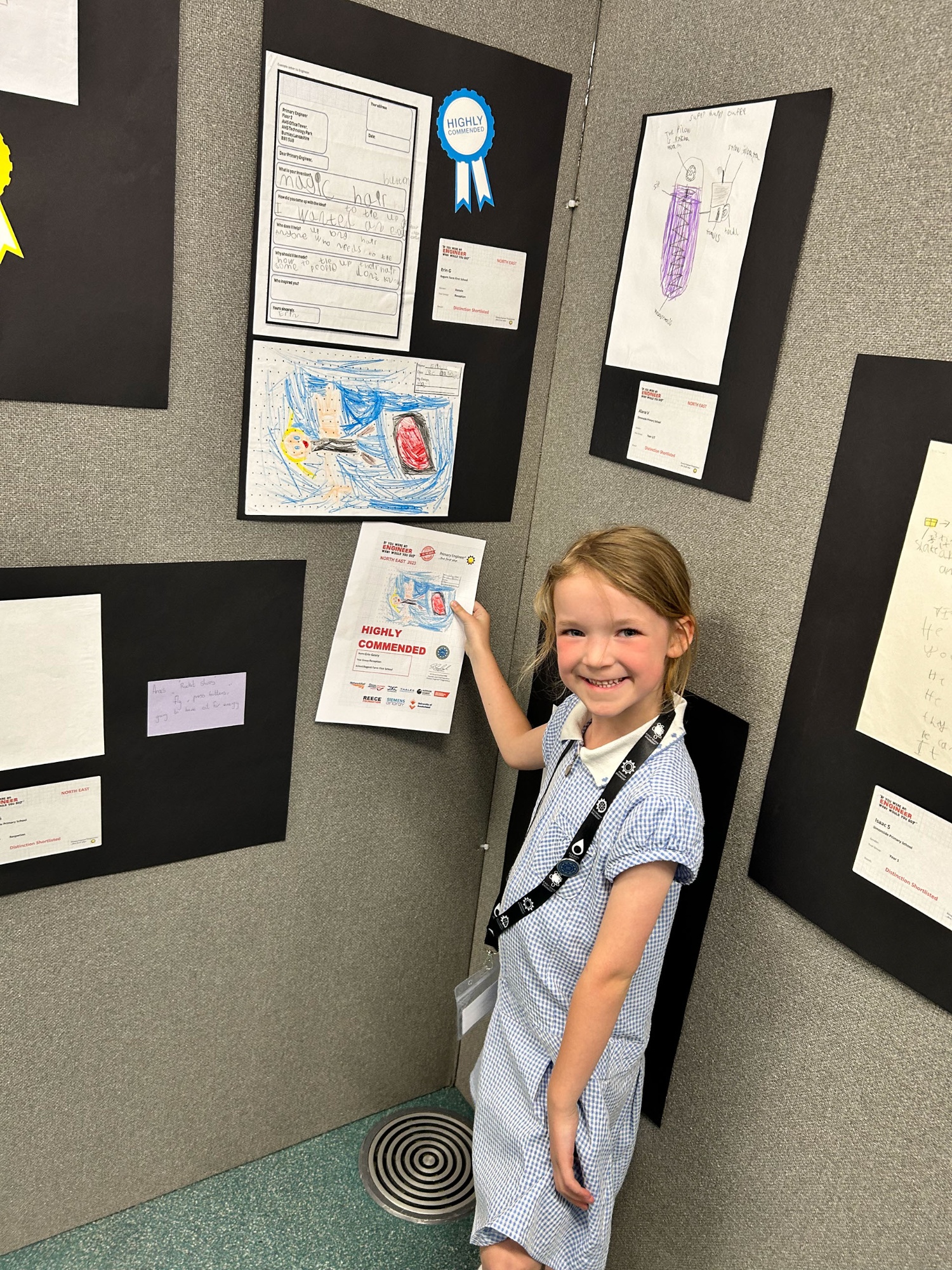Design & Technology
We believe that high-quality DT lessons will inspire children to think innovatively and develop creative procedural understanding. Our DT curriculum provides children with opportunities to develop their skills using a range of media and materials. Children learn the skills of sculpture, textiles, electrical systems, mechanisms, food and nutrition and are given the opportunity to explore and evaluate different creative ideas.
The children are taught to combine their designing and making skills with knowledge and understanding in order to design and make a product. Skills are taught progressively to ensure that all children are able to learn and practice in order to develop as they move through the school. Evaluation is an integral part of the design process and allows children to adapt and improve their product, this is a key skill which they need throughout their life. D&T allows children to apply the knowledge and skills learned in other subjects, particularly Maths, Science and Art. Children’s interests are captured through theme learning, ensuring that links are made in a cross curricular way, giving children motivation and meaning for their learning.
How do we teach Design Technology?
Our whole curriculum is shaped by our school vision which aims to enable all children, regardless of background, ability, additional needs, to flourish to become the very best version of themselves they can possibly be. We teach the National Curriculum, supported by a clear skills and knowledge progression. This ensures that skills and knowledge are built on year by year and sequenced appropriately to maximise learning for all children. All teaching of DT should follow the design, make and evaluate cycle. Each stage should be rooted in technical knowledge. The design process should be rooted in real life, relevant contexts to give meaning to learning. While making, children should be given choice and a range of tools to choose freely from. To evaluate, children should be able to evaluate their own products against a design criteria. Each of these steps should be rooted in technical knowledge and vocabulary. DT should be taught to a high standard, where each of the stages should be given equal weight.
progression. This ensures that skills and knowledge are built on year by year and sequenced appropriately to maximise learning for all children. All teaching of DT should follow the design, make and evaluate cycle. Each stage should be rooted in technical knowledge. The design process should be rooted in real life, relevant contexts to give meaning to learning. While making, children should be given choice and a range of tools to choose freely from. To evaluate, children should be able to evaluate their own products against a design criteria. Each of these steps should be rooted in technical knowledge and vocabulary. DT should be taught to a high standard, where each of the stages should be given equal weight.
The key skills we teach the children are:
- sewing and textiles
- cooking and nutrition
- electrical and mechanical components
- sculpture.
What is the impact of our DT curriculum?
Our DT Curriculum is high quality, well-thought-out and is planned to demonstrate progression.
Children will achieve:
- An excellent attitude to learning and independent working.

- The ability to use time efficiently and work constructively and productively with others.
- The ability to carry out thorough research, show initiative and ask questions to develop an exceptionally detailed knowledge of users’ needs.
- The ability to act as responsible designers and makers, working ethically, using finite materials carefully and working safely.
- A thorough knowledge of which tools, equipment and materials to use to make their products.
- The ability to apply mathematical knowledge and skills accurately. Regent Farm First School Design and Technology
- The ability to manage risks exceptionally well to manufacture products safely and hygienically.
- A passion for the subject.

Recently some of our children entered the Primary Engineering Awards to design problem solving solutions of the future: we are very proud of all the entires. One child has been highly commended and another awarded the overall winner prize! What a fabulous achievement.
